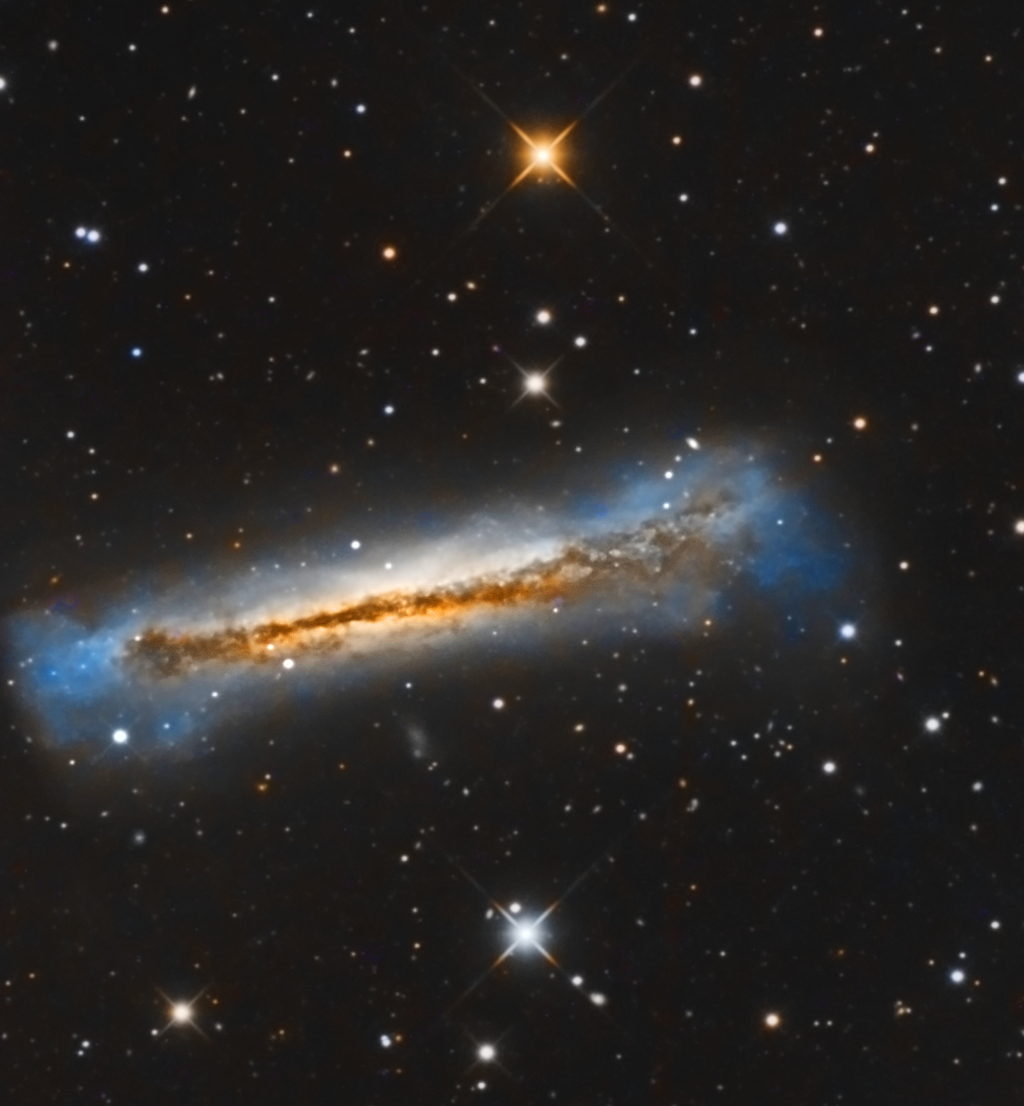Samuel and I had been set on starting a collaboration already for a while, and we recently invited Colin McGill to join us.
Our equipment consists in the following:
- Telescopes: GSO RC8, Ian King Ikharos RC8, GSO RC10
- CCD cameras: Moravian G2-1600, Atik 4000, Atik 314L+
- Mounts: 10Micron GM2000, Astro-Physics AP900, Paramount MX
We still need some work to perfect all three setups (all suffer from collimation problems, and mine is the worst, with some more serious collimation and/or tilt issues, but it looks we have a great potential working together from the dark skies of Nerpio.
Our first image, which you may consider as a test or an experiment, captures the galaxy names NGC 3628, is an unbarred spiral galaxy about 35 million light-years away in the constellation Leo.
NGC 3628 was discovered by William Herschel in 1784 and is well know for being part of the famous “Leo’s Triplet.”
The image above is the results of 22 hours of luminance and 9 hours of RGB data, acquired over the course of several nights this April. This is my take at processing the joint data, and I’m sure Samuel and Colin will do just as good or better.
I’m really satisfied at the amount of faint signal we got despite the “slow” equipment (both Colin and I are at f/8, while Samuel is at f/6, if I’m not mistaken.)
The image shows a large amount of tiny background galaxies.
Off to the left, unfortunately out of the framing, lies the tidal stream that extends some 300,000 light-years away from the galaxy.

